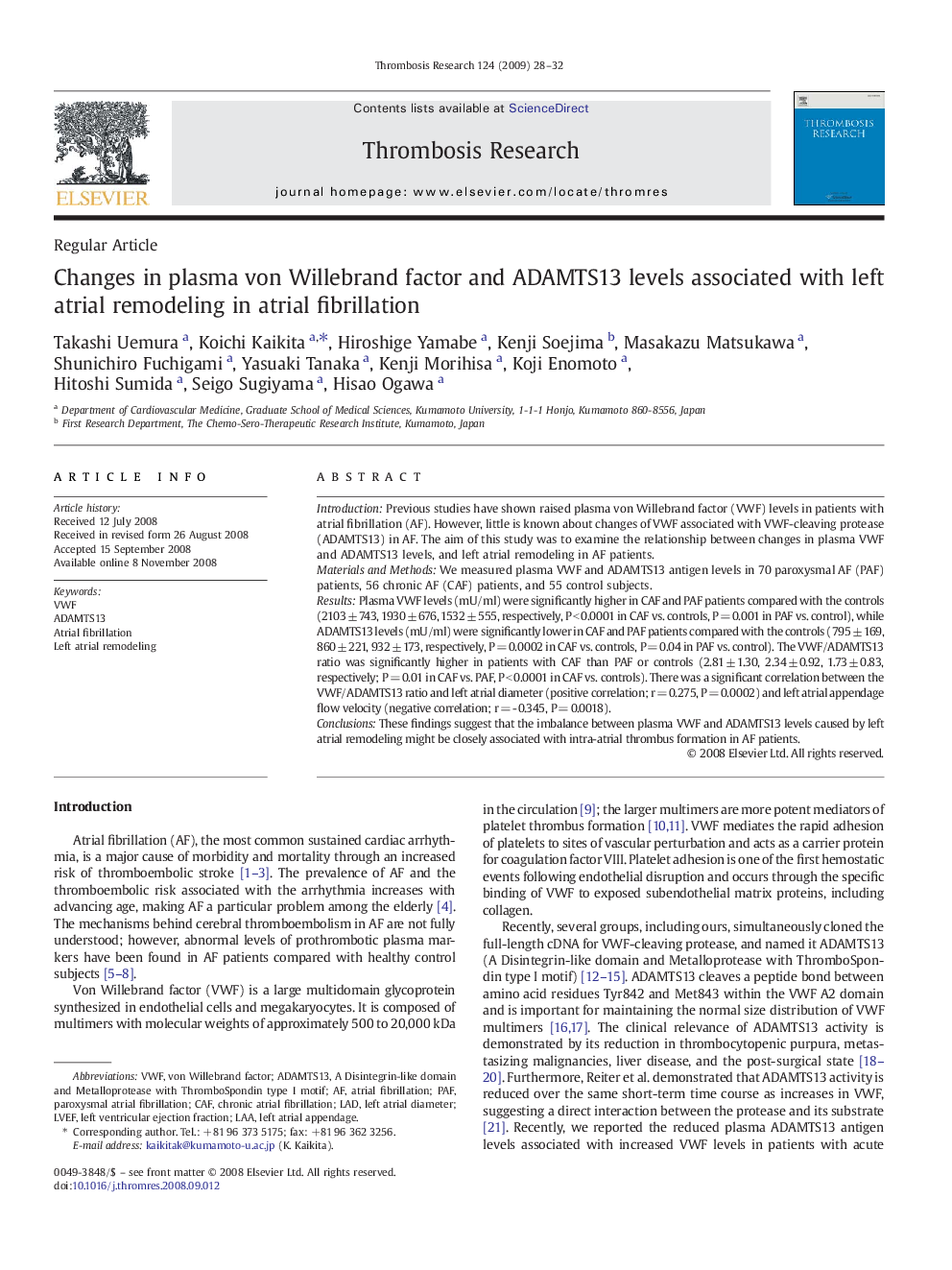| Article ID | Journal | Published Year | Pages | File Type |
|---|---|---|---|---|
| 3028341 | Thrombosis Research | 2009 | 5 Pages |
IntroductionPrevious studies have shown raised plasma von Willebrand factor (VWF) levels in patients with atrial fibrillation (AF). However, little is known about changes of VWF associated with VWF-cleaving protease (ADAMTS13) in AF. The aim of this study was to examine the relationship between changes in plasma VWF and ADAMTS13 levels, and left atrial remodeling in AF patients.Materials and MethodsWe measured plasma VWF and ADAMTS13 antigen levels in 70 paroxysmal AF (PAF) patients, 56 chronic AF (CAF) patients, and 55 control subjects.ResultsPlasma VWF levels (mU/ml) were significantly higher in CAF and PAF patients compared with the controls (2103 ± 743, 1930 ± 676, 1532 ± 555, respectively, P < 0.0001 in CAF vs. controls, P = 0.001 in PAF vs. control), while ADAMTS13 levels (mU/ml) were significantly lower in CAF and PAF patients compared with the controls (795 ± 169, 860 ± 221, 932 ± 173, respectively, P = 0.0002 in CAF vs. controls, P = 0.04 in PAF vs. control). The VWF/ADAMTS13 ratio was significantly higher in patients with CAF than PAF or controls (2.81 ± 1.30, 2.34 ± 0.92, 1.73 ± 0.83, respectively; P = 0.01 in CAF vs. PAF, P < 0.0001 in CAF vs. controls). There was a significant correlation between the VWF/ADAMTS13 ratio and left atrial diameter (positive correlation; r = 0.275, P = 0.0002) and left atrial appendage flow velocity (negative correlation; r = - 0.345, P = 0.0018).ConclusionsThese findings suggest that the imbalance between plasma VWF and ADAMTS13 levels caused by left atrial remodeling might be closely associated with intra-atrial thrombus formation in AF patients.
